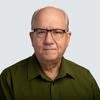In this time of the novel coronavirus, or COVID-19, pandemic, you can't go long without hearing mention of "social distancing" and "flattening the curve."
While those terms might sound like some modern scientific theory government officials and scientists have just come up with, you may be surprised to learn that these methods to stop the rapid spread of illness are due to hard lessons learned during the Spanish flu pandemic, which swept the globe almost exactly 100 years ago.
The Spanish flu was first identified in military members during World War I and rapidly swept across the globe, carrying death as it went. In fact, more U.S. military members were killed by the flu (63,114) than in the war (53,402).
In September 1918, many Americans thought the flu was over. The summer had brought a decrease in cases and deaths, so life began to resume as before.
Philadelphia organized a patriotic parade to show support for the troops and sell war bonds to raise funds for the war effort. This went on despite warnings from some officials that the illness was just waiting to make a comeback. In fact, nearby Camp Dix, New Jersey, and Camp Meade, Maryland, were locked down due to hundreds of ill troops.
Undeterred by this, and bowing to media pressure calling for the parade to go on, the city decided to stage the extravaganza on Sept. 28, 1918. The parade was huge, with crowds thronging both sides of the street for blocks. American composer John Philip Sousa, who was also a 62-year-old Marine reservist, and his orchestra even put on a concert of patriotic songs.
In less than 72 hours, thousands in the city had fallen ill. Hospitals were overwhelmed; morgues and undertakers couldn't keep pace with demand as citizens died by the thousands. In fact, one newspaper account said that there were "bodies stacked like cordwood" in parts of the city.
Meanwhile, St. Louis saw the way that the flu had spread quickly throughout other cities and military camps. By virtue of being geographically separated from the large population centers of the East Coast, St. Louis officials had time to react to the conditions back East before the illness hit their city.
In early October, St. Louis' city health commissioner ordered the closure of schools, movie theaters, saloons, sporting events, church services and other public gathering spots.
This wasn't popular with the people. Business owners protested, but government officials remained firm in their decision. The number of new cases began to decline. Then, a month later, there was an uptick of cases at the nearby Jefferson Barracks military training post, so the quarantine was expanded to all businesses except banks, newspapers, embalmers and coffin makers. St. Louis was spared from the devastation that other cities faced.
By the end of the year, much of the flu had run its course, and new cases began to drop off in the U.S., so the St. Louis quarantine was lifted. In 1918, the city, with a population of 700,000, saw 1,700 die from the flu.
In contrast, Philadelphia with a population twice that of St. Louis, saw several times the number of flu deaths -- more than 12,000. Most of the Philadelphia deaths occured in October and November and were a direct result of the September military parade.
This history is well known in epidemiology and infectious disease circles. Numerous academic papers have been written about the St. Louis effect and the lessons of social distancing and public policy. In fact, the term "flattening the curve" may have originated by comparing graphs of the number of fatalities in both cities. As you can see in the graph below, Philadelphia suffered a huge spike in deaths three weeks after that fateful September parade, while St. Louis had fewer deaths and showed no rapid increases.

As illustrated, the "curve" of the graph is flatter. This allows public health agencies to develop and prepare a response rather than be overwhelmed with a rapid spike in a short time frame.
So, the next time you hear somebody complaining that they can't go sit in a dark room and drink with other people, or go to a large sporting event for the next few weeks, remember history.
Some people learn from it. Some don't.












